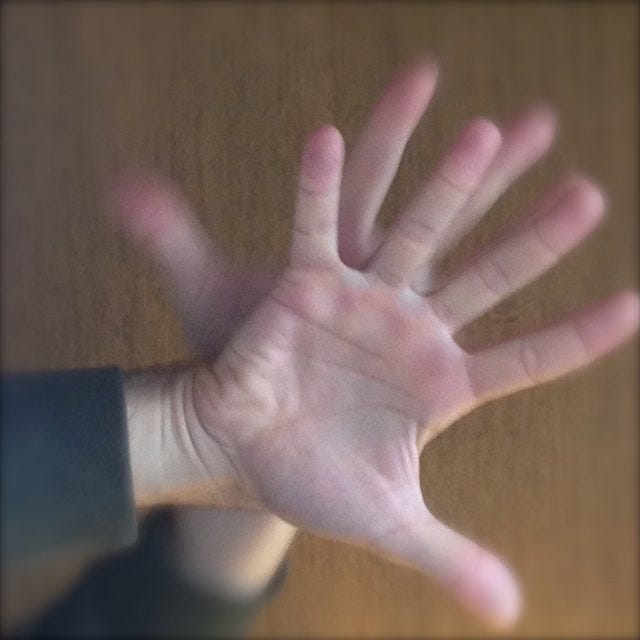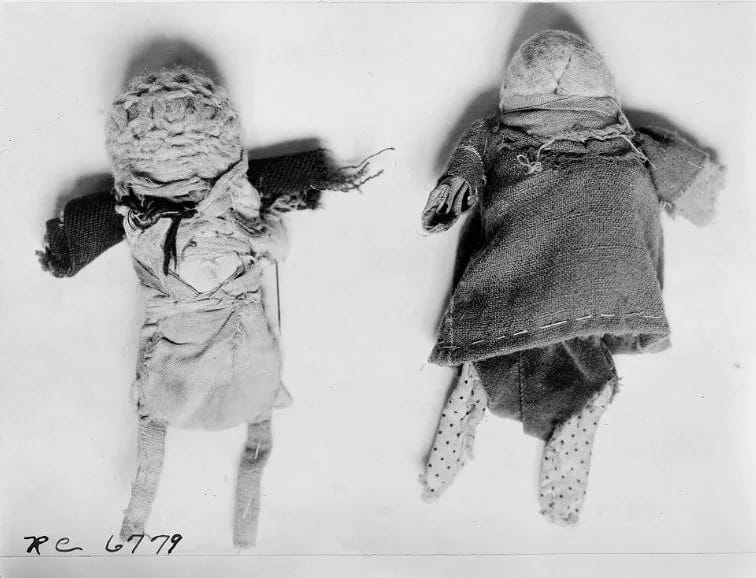Please note that as a long read, not all of this post will show up in your inbox. Just click on the “read more” link at the bottom to see the full post, or click here to view the full post in your browser.
When a garden-variety Greek (and especially teen boys and young men) leave home in the morning and the first person they see is a priest, their immediate instinct is to spit, make a covert apotropaic gesture (the faskelo, aka mano fico), or, if male-bodied, quickly clutch the family jewels.
No, Thyrathen hasn’t been hacked - this is a genuine, widespread tradition, attested from the post-Conquest Graeco-Byzantine world to this day, and known as “a bad encounter” (το κακό συναπάντημα). Its origins are obscure, but most likely reflect the priest’s association with funerary rites and the spectre of death. Apotropaic gestures are understandable; the family jewels are a living symbol of the life force.


The gesture’s antiquity runs deep. The mano fico—whether thumb between fingers or a splayed mountza—was obscene in antiquity (Lucian, Ovid; footnote 25), possibly tied to the Eleusinian Mysteries (debated, but plausible), and survives in both Italy and the Ionian islands (thanks to Venetian, not Ottoman, rule). In the rest of Greece, the mountza (faskelo) is an open-palmed curse rooted in Byzantine public shaming.
Neither is trivial: both gestures are folkloric weapons, not casual insults.
If you think this is just “modern Greeks watering down old rituals,” as critics claim, hold your horses (and read the footnotes). Magic, ritual, and protective gesture saturate daily Greek life, often in ways taken for granted by those who practice them.
What’s this all about?
This is Part 2 of my ongoing translation of Faidon Koukoules’ monumental 1925 ethnographic survey of Greek magic.
If you’re joining here, begin with Part 1 for background, FAQ, and the historical arc of binding spells (κατάδεσμοι) from late antiquity through the Byzantine era. Part 2 picks up after the fall of Constantinople and through exhaustive textual, archaeological, and material sources, demonstrates the persistence of the same rites, objects, and words through Ottoman centuries and into the present. Unlike other aspects of Greek magical culture and practice, these are remarkably stable, less adapted, and the documentation of their practice such that it is difficult to speak of anything other than true continuity.
Nor are these practices hidden. Priests impale storms and unbind spells; witches are called to heal a priest’s wife; farmers, housewives, and city-dwellers bind enemies, secure love, and control fate with the same objects, words, and gestures their ancestors used. Christian accretions are few; more often straight from the PGM or Byzantine manuals. Weather daimons are nailed to the deck with pentacles; hail banished to the wilderness; and the Drimes - the spirits of the dog days of August (now upon us) held at bay with nails. (More on this in this wondertale).
Dolls, pins, nails, effigies, soap, wax, hair, animal hearts, lentils cross the centuries as magical tools. Many are still part of everyday Greek childhood: handmade cloth dolls, for example, were made for children but could be repurposed to serve a darker intent (my mother made them for me, as hers did for her).

Folk tales, oral traditions, and even children’s games consistently echo these motifs, while mass-market grimoires and iatrosofika (folk medical books) continue to circulate similar spells. To be clear: these are facsimiles of genuine manuscripts (cited by Koukoule below), not rehashed or fabricated copies (and yes, I’m translating some of those too).
Their content includes healing and unbinding charms, protective amulets, as well as curses and darker rituals; the embedding of shadows, the “nailing” of weather, the magical logic of household and field among them, forming the substructure of belief across every layer of Greek society.
The translation provides numerous detailed examples: rituals for nailing body parts; preventing unwanted births or ensuring male heirs; binding animals, stopping storms, or averting the evil eye; and the embedding of objects and human shadows in the foundations of houses or bridges; a practice that recalls both ancient and medieval “foundation sacrifices.”
See this post for more development explaining this practice (still in use and attested even among urban, educated Athenians to this day); and this one for the folktales recording them.
Far from metaphorical, being “nailed” with the evil eye is a very real fear among even the most sophisticated Greeks; the symptoms, described mechanism, experience, and exorcisms no different to those attested centuries ago. I can personally attest to several of these practices being known and feared among my own generation in both Athens and Corfu.
When cleaning a hairbrush or cutting one’s nails, many wrap the hair/nails in a paper towel before disposing of them; alternatively they may flush them down the drain or burn them, with the explanation that “if someone finds them they might use them for a binding- dispose of them safely.” I became aware of this as a child and have heard it repeated many times since.

In short, the evidence shows neither revival nor that much adaptation, but a seamless cultural palimpsest: the same spells, rituals, and conceptual framework remained stable and open across centuries—integrated into Greek Orthodox, rural, and urban life, familiar to diaspora Greeks, and taken for granted in everyday custom.
If you’ve followed me this far, you already know better than to dismiss these as quaint “folk survivals” or the province of rural grandmothers.
What follows is the direct translation of Koukoules’ sources, drawn from manuscripts, oral testimony, legal codes, and living tradition, spanning the 15th-20th century. I have added my own testimonials where applicable.
If you want the scholarly notes, rare first-hand accounts, and the details left out of popular histories, the rest of this post is for paid subscribers. (As always, the FAQ and background remain freely available in Part 1.)
Let’s cross the threshold.
If you care about honest history, ethical practice, and a fuller record of Greece’s cultural legacy, your subscription is what keeps this work alive and public.
Support Thyrathen—help bring silenced histories back into view.
Keep reading with a 7-day free trial
Subscribe to Thyrathen: Greek Magic, Myth, and Folklore to keep reading this post and get 7 days of free access to the full post archives.





